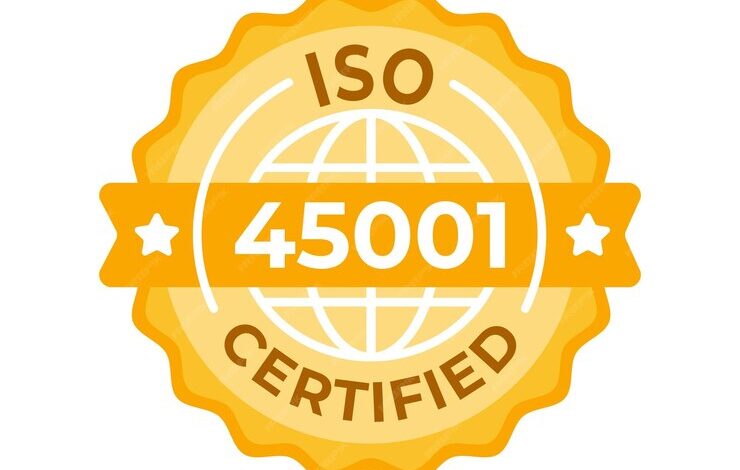ISO 45001 Certification: A Human-Centric Workplaces

Safety Isn’t Just a Policy—It’s a Promise
Let’s be honest—when was the last time you sat in a safety briefing and felt genuinely connected to the message? For most folks, safety is paperwork, signs on walls, maybe even a forgotten checklist. But here’s the twist: safety, at its core, is about people. Real people, with families, plans for the weekend, and dreams that stretch far beyond the factory floor or office cubicle.
And that’s exactly where ISO 45001 Certification comes in. It’s not some stiff standard gathering dust in a compliance binder. It’s a living framework that helps organizations build a culture of care—one where everyone goes home in the same shape they came in, if not better.
So, What Is ISO 45001 Anyway?
Think of ISO 45001 as a smart, globally recognized blueprint for Occupational Health and Safety Management Systems (OHSMS). Developed by the International Organization for Standardization, it gives companies a structured yet flexible way to identify risks, respond to hazards, and—most importantly—make safety more than just a buzzword.
But it’s not just about ticking boxes or impressing auditors. It’s about weaving safety into the everyday rhythm of work—so naturally that people don’t even have to think twice before choosing the safer way. It’s not the loud hero, but the quiet one that keeps accidents from ever happening.
The Stakes Are High—But So Are the Rewards
Picture this: a business that hasn’t had a single lost-time injury in five years. Employee morale is up. Insurance costs are down. Customers trust them more. And their brand? It’s associated with responsibility and integrity.
That’s the kind of domino effect ISO 45001 can set off. When safety improves, everything else tends to follow.
Here’s how it shows up in real life:
- Fewer workplace incidents: We’re talking reduced injuries, illnesses, and absenteeism.
- Happier, more engaged employees: Because when people feel safe, they’re more likely to give their best.
- Operational efficiency: Less disruption, more predictability. Chaos doesn’t mix well with productivity.
- Legal peace of mind: A compliant workplace isn’t just less risky—it’s less legally exposed.
- Reputation booster: Clients and partners notice when you treat your people well.
Safety Isn’t Static—It’s a Moving Target
You know what trips up a lot of businesses? Thinking they’ve “handled” safety. But safety isn’t a checkbox. It’s a moving target. Equipment evolves. Processes change. People come and go. And let’s face it—complacency has a sneaky way of settling in.
ISO 45001 builds in that healthy paranoia. It insists on regular risk assessments, real worker involvement, and performance reviews that go beyond lip service. It’s a loop, not a line—always circling back to improve what’s already there.
It’s Not Just for Factories and Hard Hats
Here’s a common myth: ISO 45001 is only for heavy industry or construction. Not true. Whether you’re running a hospital, a design studio, a logistics company, or a boutique marketing firm—if people are working there, this standard matters.
Office workers can develop repetitive strain injuries. Retail employees face customer aggression. Warehouse teams lift, stack, and sprint all day. The risks are different, sure, but they’re very real. ISO 45001 is flexible enough to adapt to these different realities without losing its core purpose.
Let’s Talk Culture: Why Buy-In Matters More Than Manuals
Okay, here’s where the rubber meets the road. You can have the best documented system in the world, but if the people on the ground don’t believe in it—or worse, don’t even know about it—it’s just paper.
ISO 45001 Certification calls for active participation. Employees aren’t just “informed”; they’re involved. They help identify risks, suggest controls, and keep each other accountable. It’s the difference between being told to wear safety gear and actually wanting to—because you get why it matters.
That kind of engagement changes the game. It creates peer-to-peer safety, where coworkers look out for one another not out of obligation, but out of genuine care. And honestly? That’s when you know you’re doing something right.
Training Isn’t Optional—It’s Foundational
Here’s the thing: ISO 45001 isn’t plug-and-play. Implementing it well means investing in people—especially through training. Not just a one-off workshop, but ongoing conversations, refreshers, and hands-on learning.
And it’s not just the frontline workers who need to know the drill. Supervisors, managers, even executives—everyone needs to speak the same language when it comes to safety. If leadership isn’t modeling safe behavior, good luck getting the rest of the team on board.
Training isn’t about making people memorize emergency exits. It’s about giving them the confidence to speak up, to notice red flags, and to know what to do when something’s not right.
Documentation Without Drama
Now let’s be real—most people hear “documentation” and their eyes glaze over. But ISO 45001 actually helps cut through the chaos. It asks for clear processes, roles, and communication lines. Not a 300-page manual that no one reads.
Think of it like GPS for safety: everyone knows where they’re headed, and if something goes off course, they can trace back to find out why. It’s structure without the straitjacket.
Real Talk: Is It Worth the Effort?
Here’s the honest answer—it depends. If your goal is to slap a badge on your website and move on, ISO 45001 is probably more work than you’re willing to put in. But if you’re serious about protecting your people, earning trust, and building a workplace that runs smoother and feels safer—then yes, it’s absolutely worth it.
It’s a long game, no doubt. You’ll need time, patience, maybe even a few tough conversations. But the payoff isn’t just in lower incident rates or insurance premiums—it’s in the faces of people who know they matter.
Implementation: Easier With the Right Help
No need to sugarcoat it—rolling out ISO 45001 can be a bit like assembling IKEA furniture without the English instructions. That’s why a lot of businesses bring in consultants, auditors, or external trainers to guide the process.
These folks don’t just throw documents at you—they help you tailor the standard to your actual operations. They walk the floor, talk to your people, point out gaps you didn’t know existed, and support you through the certification audit.
You don’t have to go it alone—and frankly, you shouldn’t.
Not a Finish Line, But a New Starting Point
Getting certified is a big deal, sure. There’s usually a certificate involved, maybe even a company-wide announcement. But don’t let that be the final chapter.
ISO 45001 is more than an achievement—it’s a mindset. It means regularly checking if your safety measures still hold up. It means listening to employees who say, “Hey, this seems risky.” It means having the humility to say, “We missed something, and we’re fixing it.”
Because the truth is, safety isn’t about being perfect—it’s about being prepared.
A Few Parting Thoughts—From One Human to Another
You know, it’s easy to treat safety like background noise. Something handled by “the health and safety department,” far removed from daily hustle. But if COVID taught us anything, it’s that safety is everybody’s business. It’s the thread that ties people, process, and purpose together.
ISO 45001 isn’t magic. It won’t eliminate every hazard or erase every accident. But it will give you a solid foundation. And maybe more importantly, it sends a message—loud and clear—that people come first.
Because in the end, no task is worth a life. No deadline is worth an injury. And no organization thrives when its people don’t feel safe.
So, whether you’re just starting out or already on your way, keep going. Keep asking the hard questions. Keep showing up for your team. That’s where real safety lives—not in rules or reports, but in the choices we make every day.



